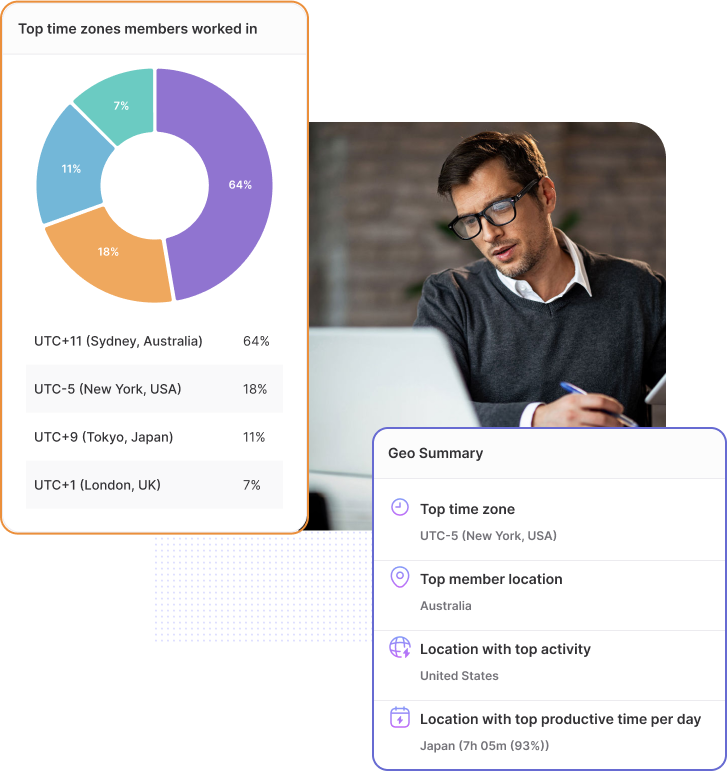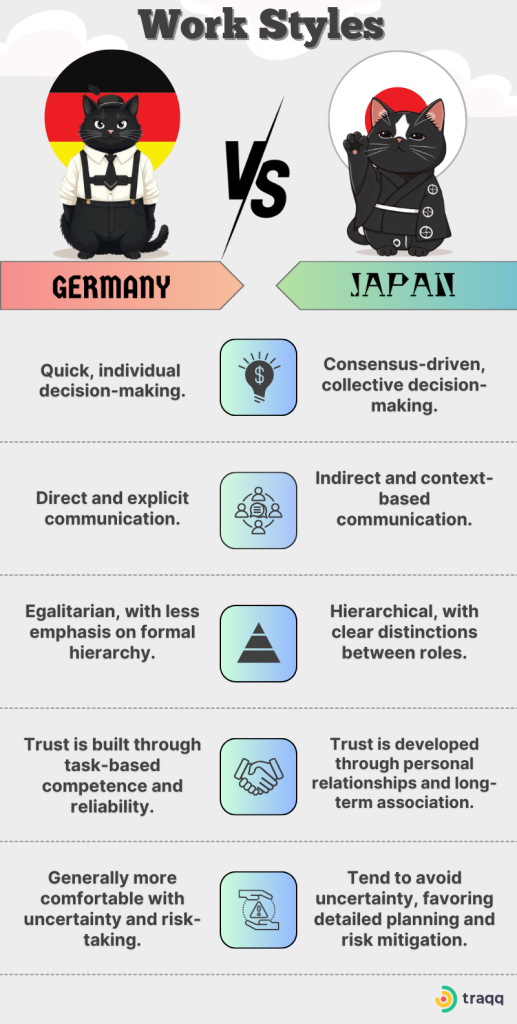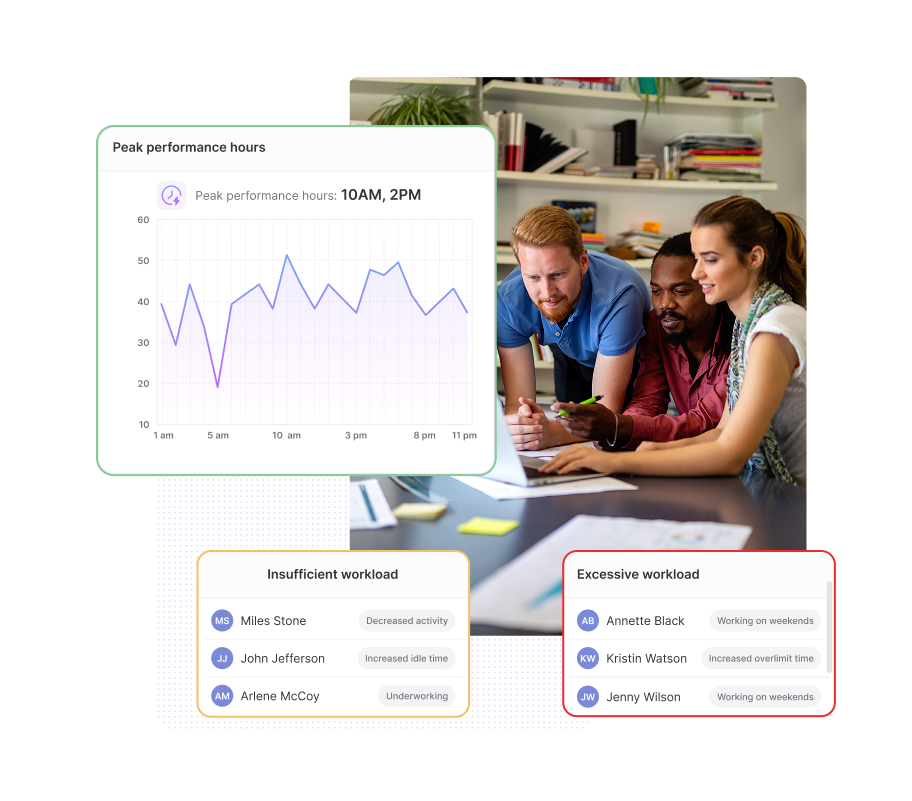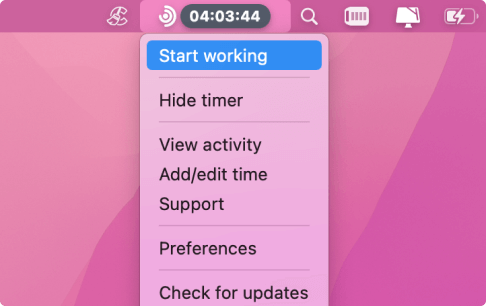
The post-pandemic landscape of remote work was supposed to be the pinnacle of freedom and productivity. The rise of remote work promised unmatched productivity and flexibility. With remote employees spread across different time zones, companies embraced the remote-first work culture—believing that location no longer mattered. But what if time zone differences are actually destroying your entire team’s productivity?
Remote team monitoring software came into the picture so that these work hours could be tracked — people clocked in all over the world, emails were exchanged, and the wheels of the collective business machine seemed to be turning at a steady pace.
So why does it feel like your projects are at a standstill? One thing is certain: there’s a silent productivity killer that you’re overlooking. But what is it? If everyone is technically “working,” but progress is moving at a snail’s pace, the problem likely lies in what you’re measuring and how.
More Than Just Logged Hours
Most contemporary project management tools and time tracking software focus on recording who clocked in, when, and how long they spend in front of a computer. However, these tools rarely account for critical elements such as asynchronous communication, team building, or employees’ team’s current locations—all of which impact work remotely success.
However, these measures fail to account for certain relationships between each worker. Yes, they may have the option to group and label a team as “Designers” or “SEO team,” but for remote teams, this is far from enough. To understand why remote teams are failing, businesses need to keep track of how, where, and when team members working across different time zones are actually getting work done.
Real-time Collaboration Across Multiple Time Zones
Take GlobalTech, an LA-based remote company that recently expanded into Germany. With the advent of their European office, leadership expected their remote teams to thrive with overlapping time zones, but the reality was different.
Real-time meetings became difficult, and synchronous communication dropped drastically — deadlines were missed, projects stalled, and overall output plummeted by 70% compared to pre-expansion figures.
Adhering to regular business hours created additional challenges in communication and collaboration, as employees from different time zones interpreted deadlines based on their local time.
With a 9-hour difference between the two teams, real-time communication became nearly impossible. Research shows that when remote team members work in different time zones, the frequency of synchronous communication drops by 11% per hour of separation. Without proper communication channels, teams rely on out-of-office emails, video chat, or instant messaging—often delaying decisions by an entire day.
Asynchronous communication is crucial for remote teams spread across different time zones, yet without structured communication windows, productivity can plummet. At GlobalTech, the temporal distance between their teams meant key decisions were often delayed, forcing employees into late-night shifts or relying on video messages instead of live discussions.

Effective Communication in Remote Teams
Effective communication is the backbone of any successful remote team, especially when team members are scattered across multiple time zones. To bridge the gap created by time zone differences, leveraging the right project management tools is essential. Tools like Traqq, Trello, Asana, and Basecamp provide a centralized platform where team members can track progress, assign tasks, and set deadlines, ensuring everyone is on the same page.
Regular virtual meetings are crucial for maintaining synchronous communication. Platforms like Zoom and Google Meet facilitate real-time discussions, allowing team members to collaborate as if they were in the same room. However, relying solely on synchronous communication can be challenging due to varying working hours. This is where asynchronous communication tools like email and instant messaging apps come into play. They allow team members to share updates and communicate effectively without the need for everyone to be online simultaneously.
Managing time zone differences requires careful planning. Time zone management tools like World Time Buddy and Time and Date can help schedule meetings at times that are convenient for all team members. Establishing clear communication channels and guidelines is also vital. This includes setting clear deadlines and expectations, ensuring that everyone knows when and how to communicate, regardless of their time zone.
Differences in Company Culture and Local Laws
While both teams at GlobalTech did their best to adapt, but company culture, local holidays, and strict labor laws made things worse. In Germany, strict labor laws limit excessive off hours work, while German by-the-book cultural norms meant that employees weren’t willing to forgo their regularly scheduled time off anyway.
Daylight saving time further complicates communication and collaboration among remote workers by creating significant temporal distance due to biannual clock adjustments. These changes can reduce synchronous communication among employees, thereby influencing productivity and work dynamics.
Meanwhile, their U.S. counterparts, who are used to flexible work schedules and split shifts, found themselves sending Slack messages at inconvenient times. The result? Misaligned communication windows and a fragmented remote-first work culture.
According to Harvard Business School, even when there’s a one-hour time difference, real-time communication is dramatically affected between displaced teams, with 43% of synchronous communication taking place when at least one employee is working outside of local business hours.
In perpetual ad hoc fashion, the Americans at GlobalTech tried to do just that in an effort to compensate, but without systematically approaching the issue, this was just a game of corporate whack-a-mole. To put this into perspective, an Organization Science studyfound that employees spend an average of 9% of their communication time outside regular hours in countries with strict work-hour-limiting labor laws.
In contrast, countries without such legal limits see an average of 32% of communication occurring after hours. Such tactics are inherently unsustainable as the work-life balance of these teams begin to deteriorate, further adding to the already lost productivity.

Aligning Business Needs with Workforce Productivity
While GlobalTech’s massive 70% productivity drop is an extreme example of poor time zone management, such losses aren’t inevitable for all distributed remote teams. Instead of just logging hours, your time tracking solution must analyze employees working patterns to optimize workflows.
One of the main challenges is synchronous communication when team members are not in the same time zone. This can complicate scheduling meetings and bonding activities, which are crucial for building team relationships and enhancing productivity.
By leveraging collaboration tools and tracking when team members are most active, companies can better plan ahead and schedule meetings during overlapping work hours. With shared integrations and structured meeting notes, managers can ensure smoother asynchronous methods that don’t rely on constant availability.
Think of it like productivity GPS, but instead of showing you the quickest route to your local supermarket, it shows you the path to the most efficient and cost-effective way to optimize your workflows.
There are a few key moments that managers tend to overlook when pouring through their employees time-tracking data, often because it simply doesn’t provide much more than logged hours and random screenshots.
However, Traqq, an AI-driven productivity management tool, takes geography data, time zones, and workers’ activity into account, thus providing key insights that can help managers mitigate or completely eliminate productivity loss among distributed teams.
Managing Time Zone Differences with Project Management Tools
Navigating the complexities of multiple time zones can be daunting, but project management tools offer a lifeline. Tools like Trello, Asana, and Basecamp provide a centralized hub for communication and collaboration, making it easier to manage projects across different time zones.
To effectively manage time zone differences, it’s crucial to set clear deadlines and expectations for team members. Project management tools allow you to assign tasks and track progress, ensuring that everyone knows what needs to be done and when. This helps in maintaining a steady workflow, even when team members are working at different times.
Using time zone management tools can also aid in planning meetings. By being aware of the time differences, you can schedule meetings at times that are convenient for everyone. Establishing clear communication channels and guidelines is essential for remote teams. This includes using project management tools to keep everyone informed and ensuring that communication is consistent and transparent.
Strategies for Effective Remote Team Meetings
Conducting remote team meetings across multiple time zones can be challenging, but with the right strategies, you can ensure they are effective and productive. Start by scheduling meetings in advance using time zone management tools. This ensures that all team members are aware of the time difference and can plan accordingly.
Using video conferencing software like Zoom or Google Meet facilitates synchronous communication, allowing team members to interact in real-time. It’s important to establish a clear meeting agenda and communicate it to all team members in advance. This helps keep the meeting focused and ensures that all relevant topics are covered.
Asynchronous communication tools like email and instant messaging apps can be used to share updates and discuss topics before the meeting. This allows team members to come prepared and makes the meeting more efficient. Rotating meeting times is another effective strategy. By accommodating team members in different time zones, you ensure that everyone has an opportunity to participate in meetings at a convenient time.
The Factors Driving Peak Productivity
For starters, you need to be able to determine the peak productive times for each team based on both location and department. With the help of Traqq’s intuitive interface, this real-time data can be easily acquired in a few clicks.
The Arc development team uses standardized emoji reactions to enhance remote team communication. By using specific emojis to convey messages like ‘I’m finished’ or ‘I agree,’ teams can improve clarity and efficiency, especially in asynchronous communication across various time zones.
Armed with this knowledge, managers can schedule tasks in the spaces where these peaks align and eliminate unnecessary delays. No more “Let’s circle back tomorrow” when a decision can be made today.
Here’s where it really gets interesting: Traqq actually tells you which teams and locations are your heavy hitters. Maybe your European team gets things done twice as fast as your U.S. division, or maybe your Southeast Asian office is quietly solving problems before anyone else even knows they exist. Instead of just assuming everyone is equally productive, Traqq gives you the data to make informed decisions about where to invest your resources.

This also leads to smarter hiring decisions. Why spend big bucks on talent in expensive markets when another team is producing the same quality of work at a fraction of the cost? With Traqq, businesses can track productivity against labor expenses, ensuring they’re getting the best ROI on their global workforce.
The Importance of Team Building in Remote Teams
Building a strong remote team is essential for success, especially when team members are spread across multiple time zones. Establishing clear communication channels and guidelines is the first step. This ensures that everyone knows how to communicate and what is expected of them.
Using project management tools to track progress and assign tasks helps keep everyone on the same page. Regular virtual meetings facilitate synchronous communication, allowing team members to connect and collaborate in real-time. Asynchronous communication tools are also important for staying connected and sharing updates.
Celebrating team members’ achievements and milestones is crucial for building a sense of community and belonging. Recognizing and appreciating the hard work of team members fosters a positive work environment and boosts morale. By focusing on team building, you create a cohesive and motivated remote team that can overcome the challenges of working across multiple time zones.
From Counting Hours to Actually Getting Stuff Done
The real quantum leap between tracking hours and measuring productivity lies in trends that uncover cultural differences in teams working remotely. When you combine the factors of location, activity, and peak performance, a door to some pretty groundbreaking developments swings wide open.
Take a company that relies heavily on cross-cultural collaboration. Before taking a deeper dive into their productivity trends, they had no idea that their European and Asian teams had completely different work habits. In a series of interviews conducted by Kevin Henry on German-Japanese virtual team collaboration, German teams were found to favor structured schedules with clearly defined deep work sessions and long, agenda-driven meetings.
In contrast, their Japanese counterparts leaned toward a more flexible, consensus-driven approach, preferring frequent but shorter check-ins to ensure alignment before moving forward.

“In meetings with German colleagues, decisions are expected to be made quickly, but we prefer to take time to reach a consensus,” a Japanese participant noted. Because no one was tracking these patterns, the teams kept running into the same problems time and time again: conflict, misunderstanding, and poor project performance.
Once Traqq came into the picture and these trends became evident, it was as if someone turned on the flashlight and finally found the black cat. The company immediately restructured their workflows to accommodate for the needs of both teams, taking into account their natural peak productivity hours.
A relatively simple change that makes team members feel connected and aligned improves productivity by up to 25%, according to a McKinsey study, but this change can only be made if a company has software in place that tracks these trends.
Trust, Transparency, and Getting Over the “Big Brother” Fear
While gathering time-tracking data is imperative to a remote team’s success, there’s a fine line between tracking productivity trends and tracking people. It’s no secret that nobody likes the idea of being watched. When time tracking is mentioned in a team meeting, more often than not, each team member immediately pictures some boss staring at their screen, waiting to see how many bathroom breaks employees take in a day. While this may be the case for a lot of the time tracking software on the market today, this approach falls by the wayside as ethical monitoring becomes the new norm.

Traqq isn’t a surveillance tool — it’s a productivity enhancer. It doesn’t record screens, track keystrokes, or hover over employees like an overbearing manager with trust issues. Instead, it’s a silent, yet powerful assistant that provides invaluable information to its users — information that helps managers and employees alike work to the beat of their natural rhythms.
Employees get full visibility into their work habits, meaning they can tweak their schedules for better efficiency instead of just reacting to arbitrary company policies. Managers stop playing the guessing game with workload distribution and can finally balance workloads fairly, instead of unintentionally overloading employees just because their time zone is more convenient.

Collaboration Tools Are the Future of Remote Work
Smart businesses are ditching rigid work schedules and outdated tech that’s akin to punch cards in favor of AI-driven, geography-aware time tracking that aligns actual productivity with business needs. They’re using data, not assumptions, to allocate resources, and they’re embracing trust-based, flexible work models that empower employees instead of micromanaging them.
The future of remote work belongs to companies that master time management on a global scale, especially for team members working across different time zones. The question is, are you leading the charge — or are you still waiting for that one email reply that should’ve come in yesterday?
